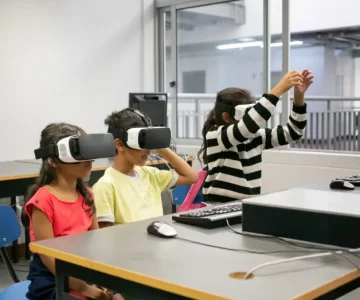Preparing students for the modern world is no longer just about memorizing facts — it’s about equipping them with the skills to think critically, work collaboratively, communicate effectively, and adapt to an ever-changing environment. Teachers play a pivotal role in shaping these abilities, and with the right strategies, classrooms can become vibrant hubs of future-ready learning.
Below are five approaches that can help educators bring 21st-century skills to life in their teaching.
1. Building a Culture of Collaboration
Learning together encourages the exchange of diverse perspectives and strengthens problem-solving skills. When students work in teams, they not only gain academic knowledge but also develop respect for different viewpoints and learn how to build on each other’s strengths.
Ways to Promote Collaboration:
- Team-based projects: Assignments that require group effort help students manage time, share responsibilities, and navigate challenges together.
- Peer mentoring: Pairing students to teach and learn from one another builds confidence and accountability.
- Digital collaboration platforms: Tools like Trello or Padlet streamline teamwork and communication, making group projects more organized and inclusive.
2. Cultivating Critical Thinking
In a world full of information, the ability to question, analyze, and make reasoned decisions is essential. Encouraging critical thinking empowers students to become independent learners who can approach problems from multiple angles.
Practical Techniques:
- Socratic dialogue and debates: Structured discussions challenge students to think deeper and consider different viewpoints.
- Case studies and real-world examples: Applying concepts to real-life situations strengthens understanding and relevance.
- Reflective exercises: Journaling or self-assessment activities help students recognize their own thought processes and growth areas.
3. Harnessing Technology for Learning
Technology offers endless possibilities for personalization, creativity, and access to resources. When used effectively, it can close learning gaps and support different learning styles.
Integration Tips:
- Interactive learning apps: Digital tools with quizzes and instant feedback keep students engaged while tracking progress.
- Online collaborative spaces: Platforms that allow shared workspaces help students connect and contribute regardless of location.
- Ensuring equal access: Providing devices and internet access ensures that all learners can benefit equally from digital opportunities.
4. Inspiring Creativity and Innovation
Encouraging students to think beyond conventional solutions nurtures adaptability and curiosity. A creative classroom is one where experimentation is valued as much as correctness.
Ideas for Fostering Creativity:
- Incorporate the arts and design thinking: Projects that blend creativity with problem-solving encourage imagination and fresh ideas.
- Provide outlets for expression: Brainstorming, storytelling, and creative writing allow students to share unique perspectives.
- Support risk-taking: A safe space for trial and error encourages bold thinking and innovative solutions.
5. Strengthening Communication Skills
Whether through speaking, writing, or digital interaction, strong communication skills are critical in today’s interconnected world. Students who can express themselves clearly are better prepared for academic, professional, and personal success.
Ways to Improve Communication:
- Public speaking and presentations: These activities boost confidence and help students articulate their ideas.
- Collaborative writing tasks: Group-based writing projects encourage constructive feedback and improve clarity.
- Role-playing scenarios: Practicing real-life communication situations builds empathy and adaptability.
Final Thoughts
Embedding these strategies into your teaching can transform the classroom into a space where students not only absorb knowledge but also develop the skills to thrive in a complex world. By prioritizing collaboration, critical thinking, technology, creativity, and communication, educators can prepare their students for both the challenges and opportunities of the future.





